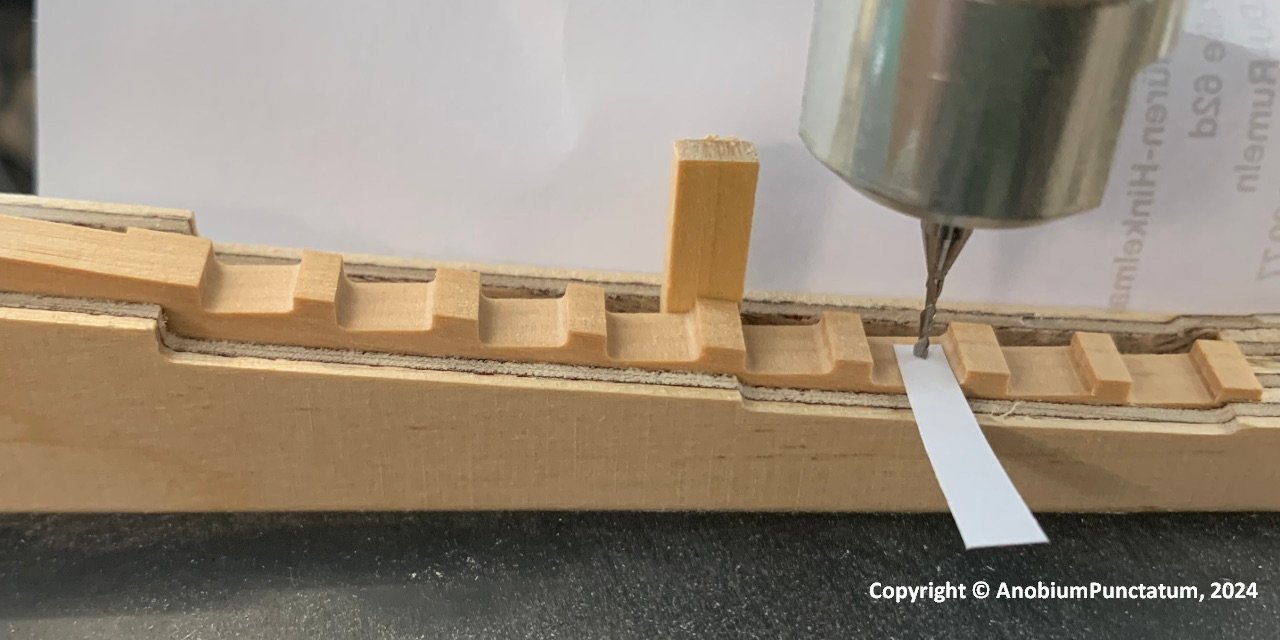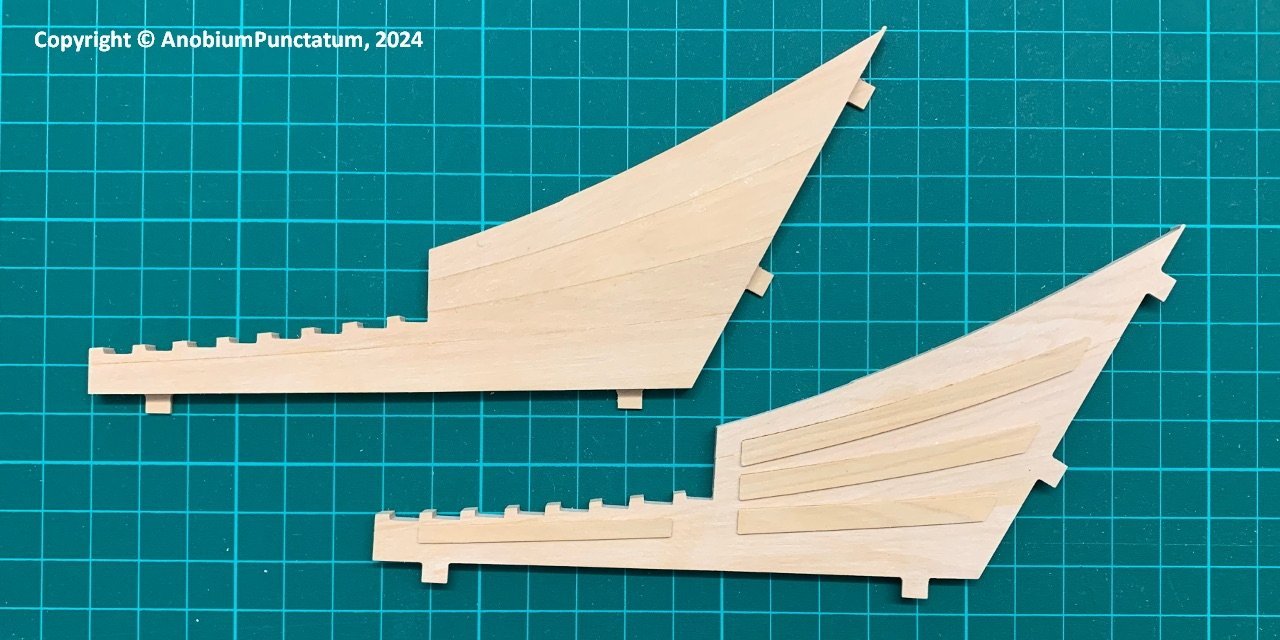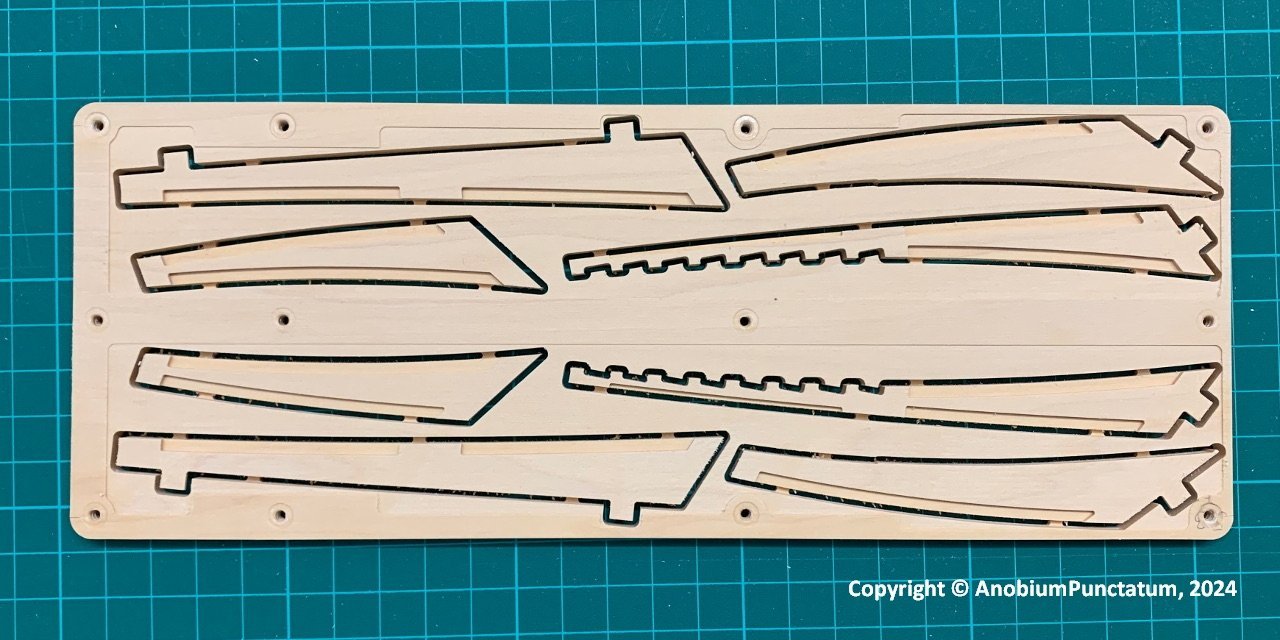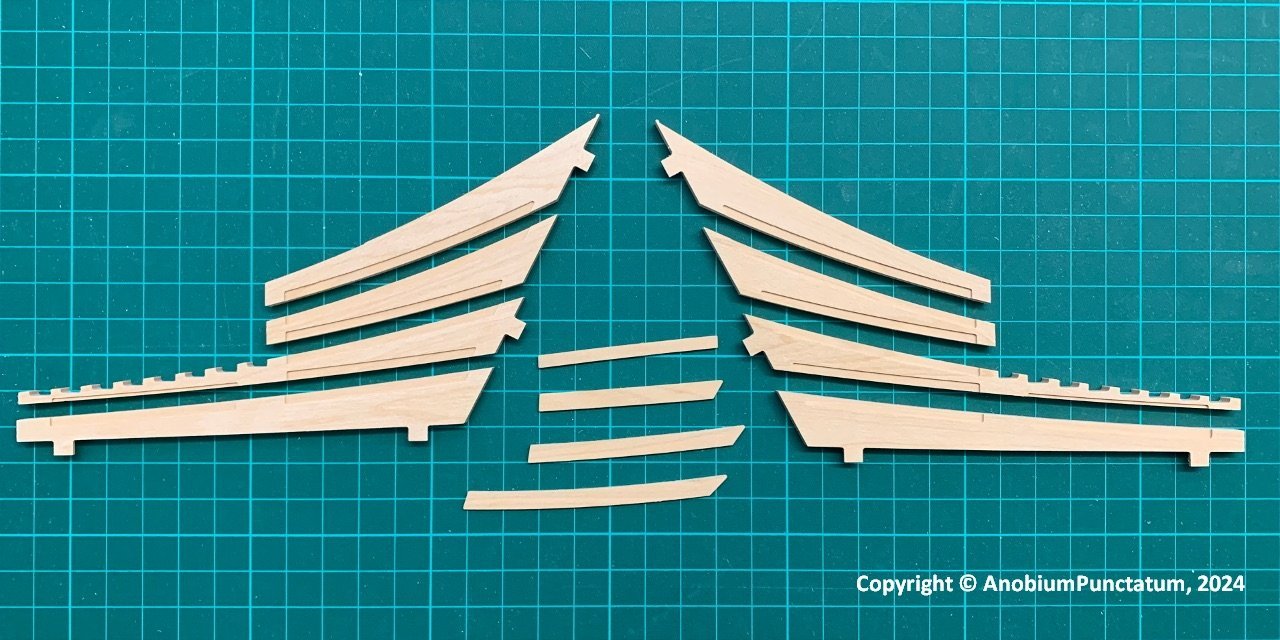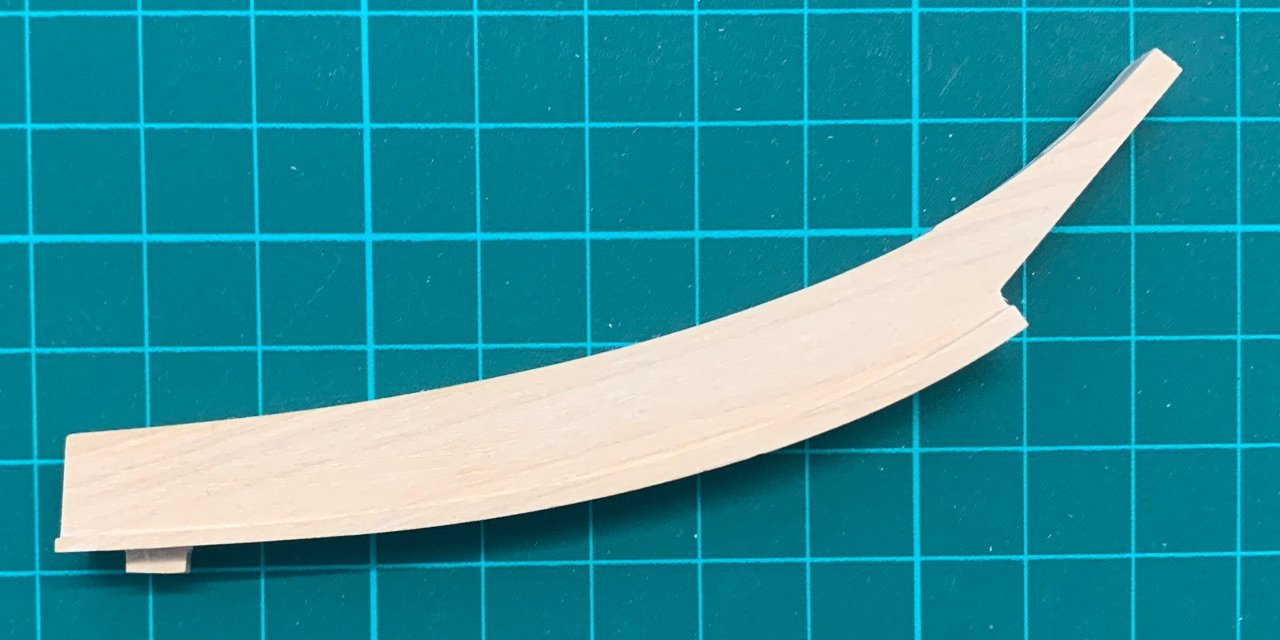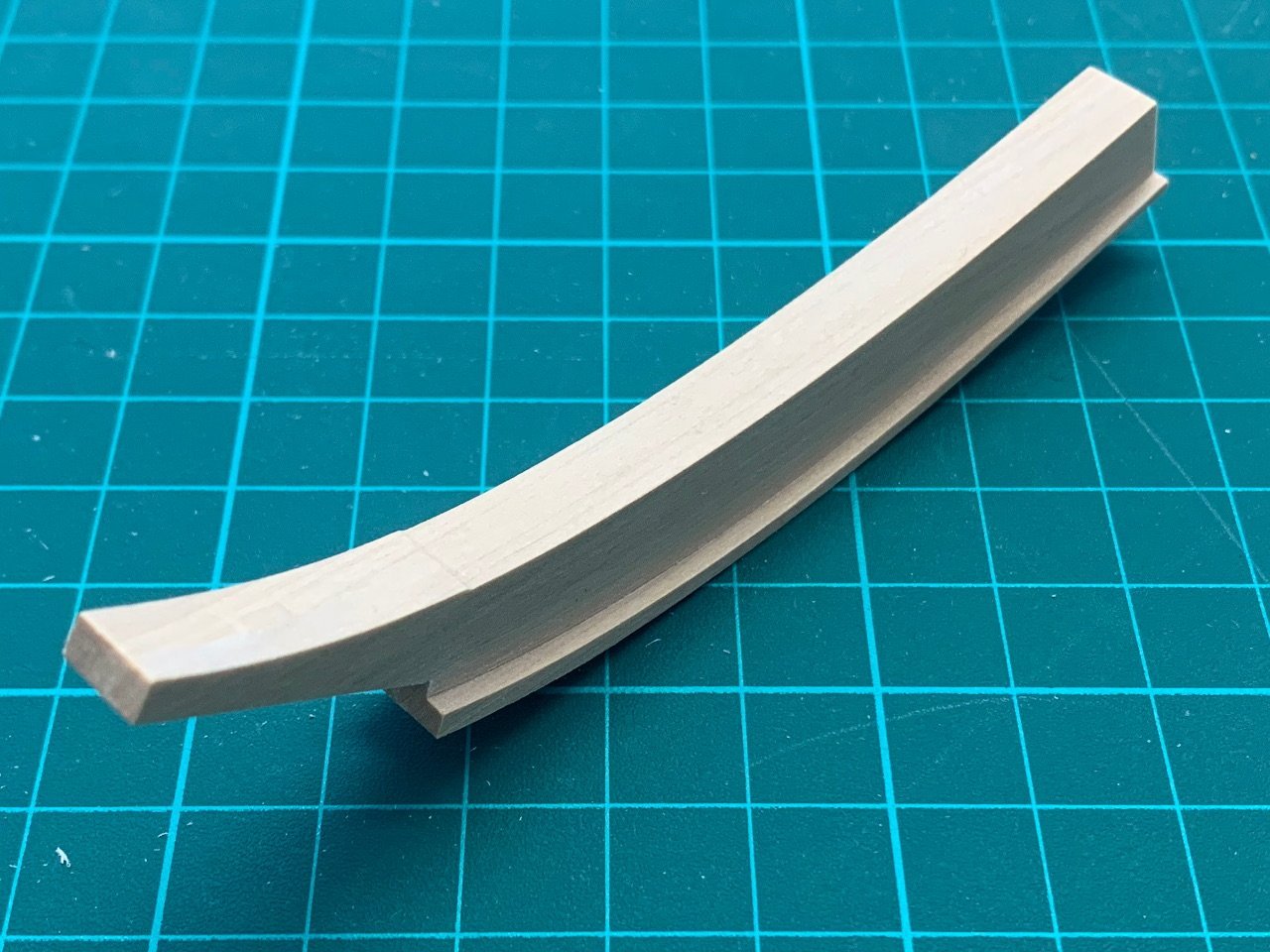-
Posts
1,220 -
Joined
-
Last visited
About AnobiumPunctatum
- Birthday 10/05/1964
Profile Information
-
Gender
Male
-
Location
Duisburg, Germany
-
Interests
English ship building during the War of American Revolution
Klinker build ship of the medieval
Recent Profile Visitors
-
 Stuntflyer reacted to a post in a topic:
Sloop Speedwell 1752 by Chuck - Ketch Rigged Sloop - POF - prototype build
Stuntflyer reacted to a post in a topic:
Sloop Speedwell 1752 by Chuck - Ketch Rigged Sloop - POF - prototype build
-
 mtaylor reacted to a post in a topic:
Sloop Speedwell 1752 by Chuck - Ketch Rigged Sloop - POF - prototype build
mtaylor reacted to a post in a topic:
Sloop Speedwell 1752 by Chuck - Ketch Rigged Sloop - POF - prototype build
-
 mtaylor reacted to a post in a topic:
Sloop Speedwell 1752 by Chuck - Ketch Rigged Sloop - POF - prototype build
mtaylor reacted to a post in a topic:
Sloop Speedwell 1752 by Chuck - Ketch Rigged Sloop - POF - prototype build
-
 laarmada reacted to a post in a topic:
Sloop Speedwell 1752 by Chuck - Ketch Rigged Sloop - POF - prototype build
laarmada reacted to a post in a topic:
Sloop Speedwell 1752 by Chuck - Ketch Rigged Sloop - POF - prototype build
-
 Jack12477 reacted to a post in a topic:
Sloop Speedwell 1752 by Chuck - Ketch Rigged Sloop - POF - prototype build
Jack12477 reacted to a post in a topic:
Sloop Speedwell 1752 by Chuck - Ketch Rigged Sloop - POF - prototype build
-
 Chuck reacted to a post in a topic:
Sloop Speedwell 1752 by Chuck - Ketch Rigged Sloop - POF - prototype build
Chuck reacted to a post in a topic:
Sloop Speedwell 1752 by Chuck - Ketch Rigged Sloop - POF - prototype build
-
 AnobiumPunctatum reacted to a post in a topic:
Sloop Speedwell 1752 by Chuck - Ketch Rigged Sloop - POF - prototype build
AnobiumPunctatum reacted to a post in a topic:
Sloop Speedwell 1752 by Chuck - Ketch Rigged Sloop - POF - prototype build
-
 AnobiumPunctatum reacted to a post in a topic:
Sloop Speedwell 1752 by Chuck - Ketch Rigged Sloop - POF - prototype build
AnobiumPunctatum reacted to a post in a topic:
Sloop Speedwell 1752 by Chuck - Ketch Rigged Sloop - POF - prototype build
-
 AnobiumPunctatum reacted to a post in a topic:
Sloop Speedwell 1752 by Chuck - Ketch Rigged Sloop - POF - prototype build
AnobiumPunctatum reacted to a post in a topic:
Sloop Speedwell 1752 by Chuck - Ketch Rigged Sloop - POF - prototype build
-
 mtaylor reacted to a post in a topic:
Beavers Prize 1777 by Mike Y - 1:48 - POF - Hahn style
mtaylor reacted to a post in a topic:
Beavers Prize 1777 by Mike Y - 1:48 - POF - Hahn style
-
 mtaylor reacted to a post in a topic:
Beavers Prize 1777 by Mike Y - 1:48 - POF - Hahn style
mtaylor reacted to a post in a topic:
Beavers Prize 1777 by Mike Y - 1:48 - POF - Hahn style
-
 mtaylor reacted to a post in a topic:
Redoing Oseberg
mtaylor reacted to a post in a topic:
Redoing Oseberg
-
I don't think so. In my opinion is the purpose of the drawing to show the differences between the standard frameing sheme (doulble frame followed by two single frames) and the sheme which was used for Kingfisher in the midship area. Interesting is also the triple frame midships.
- 884 replies
-
- hahn
- oliver cromwell
-
(and 1 more)
Tagged with:
-
 Mike Y reacted to a post in a topic:
Beavers Prize 1777 by Mike Y - 1:48 - POF - Hahn style
Mike Y reacted to a post in a topic:
Beavers Prize 1777 by Mike Y - 1:48 - POF - Hahn style
-
 AnobiumPunctatum reacted to a post in a topic:
HMS Mercury 1779 by Mr Pleasant - 1:64 - based on Shipyard paper model
AnobiumPunctatum reacted to a post in a topic:
HMS Mercury 1779 by Mr Pleasant - 1:64 - based on Shipyard paper model
-
 AnobiumPunctatum reacted to a post in a topic:
Beavers Prize 1777 by Mike Y - 1:48 - POF - Hahn style
AnobiumPunctatum reacted to a post in a topic:
Beavers Prize 1777 by Mike Y - 1:48 - POF - Hahn style
-
Ah, the midship frames from Kingfisher. For the first. Ships of the class the frameing design, which was introduced with Cygnet is not correct. I am busy with another Swan Class Fly. For this ship the Cygnet design is with some small adjustments possible.
- 884 replies
-
- hahn
- oliver cromwell
-
(and 1 more)
Tagged with:
-

Redoing Oseberg
AnobiumPunctatum replied to KrisWood's topic in CAD and 3D Modelling/Drafting Plans with Software
Hi Kris, I am really happy that you continue with your reconstruction of ths beautyful viking ship. I will follow as in the last years with great interest. -
 AnobiumPunctatum reacted to a post in a topic:
Trireme Olympias by Richard Braithwaite
AnobiumPunctatum reacted to a post in a topic:
Trireme Olympias by Richard Braithwaite
-
 AnobiumPunctatum reacted to a post in a topic:
Trireme Olympias by Richard Braithwaite
AnobiumPunctatum reacted to a post in a topic:
Trireme Olympias by Richard Braithwaite
-
 AnobiumPunctatum reacted to a post in a topic:
Trireme Olympias by Richard Braithwaite
AnobiumPunctatum reacted to a post in a topic:
Trireme Olympias by Richard Braithwaite
-
 AnobiumPunctatum reacted to a post in a topic:
Trireme Olympias by Richard Braithwaite
AnobiumPunctatum reacted to a post in a topic:
Trireme Olympias by Richard Braithwaite
-
 AnobiumPunctatum reacted to a post in a topic:
Trireme Olympias by Richard Braithwaite
AnobiumPunctatum reacted to a post in a topic:
Trireme Olympias by Richard Braithwaite
-

Ship Ribbing with CAD?
AnobiumPunctatum replied to Sanjith_D's topic in CAD and 3D Modelling/Drafting Plans with Software
I disagree with your meaning, @Dr PR . I have reconstructed until know 3 different ships in 2D and for the first one most of the frames build following my 2D drawings. Everything is fitting really well. I also checked my 2D reconstruction with 3D models with the help of a colleague and there are also no waves. For construction in 2D it is really important to check the hull with buttock and horizontal lines. If you forget the buttock line it can produce waves. I am in the moment busy with the frame drawings for the sloop Fly and I am quite sure that the hull will also be smooth. For my CNC I give later a few tens of a millimeter to allow some tolerances during the build. These are the biggest inaccuracies. -
As the weather has been nice over the last two weeks, I've swapped my little shipyard for my bike. As a result, I haven't got as far as I had planned. As I wrote in the last part, I want to try a different technique for the after deadwood, especially to avoid milling on both sides. Firstly, the individual components of the deadwood are milled once with the correct side and once mirrored. In order to be able to glue the two sides together later, recesses are milled into which fitting pieces are glued before gluing them together. The next picture shows the components removed from the board and trimmed. Before gluing them together, a few small curves that inevitably result from the milling cutter must be removed. I do this with my little Proxxon. The last picture shows the individual components after gluing them together. A weak point became apparent when machining the parts. The direction of the wood grain of the tabs, which are used to position the finished component on the keel, follows the overall part. It would have been better to mill the tabs separately and rotate the grain by 90°. This would have made the components much less susceptible to breakage. In the next part of the report, both sides of the deadwood parts will be milled and the deadwood glued together.
-
The first component for the backbone of the Alert is the Fore Deadwood. This was milled from a piece of boxwood. Even though I am very happy with the finished part, I will use a different technique for the aft deadwood. Before I could hold the finished part in my hands, I had a few failed attempts. With a much more complicated component, this method is unlikely to work satisfactorily.
-
In Europe the first choice for builing models is pear wood. There are some compnies in the markt to buy the timber.
- 1,784 replies
-
- syren ship model
- winchelsea
-
(and 1 more)
Tagged with:
About us
Modelshipworld - Advancing Ship Modeling through Research
SSL Secured
Your security is important for us so this Website is SSL-Secured
NRG Mailing Address
Nautical Research Guild
237 South Lincoln Street
Westmont IL, 60559-1917
Model Ship World ® and the MSW logo are Registered Trademarks, and belong to the Nautical Research Guild (United States Patent and Trademark Office: No. 6,929,264 & No. 6,929,274, registered Dec. 20, 2022)
Helpful Links
About the NRG
If you enjoy building ship models that are historically accurate as well as beautiful, then The Nautical Research Guild (NRG) is just right for you.
The Guild is a non-profit educational organization whose mission is to “Advance Ship Modeling Through Research”. We provide support to our members in their efforts to raise the quality of their model ships.
The Nautical Research Guild has published our world-renowned quarterly magazine, The Nautical Research Journal, since 1955. The pages of the Journal are full of articles by accomplished ship modelers who show you how they create those exquisite details on their models, and by maritime historians who show you the correct details to build. The Journal is available in both print and digital editions. Go to the NRG web site (www.thenrg.org) to download a complimentary digital copy of the Journal. The NRG also publishes plan sets, books and compilations of back issues of the Journal and the former Ships in Scale and Model Ship Builder magazines.





